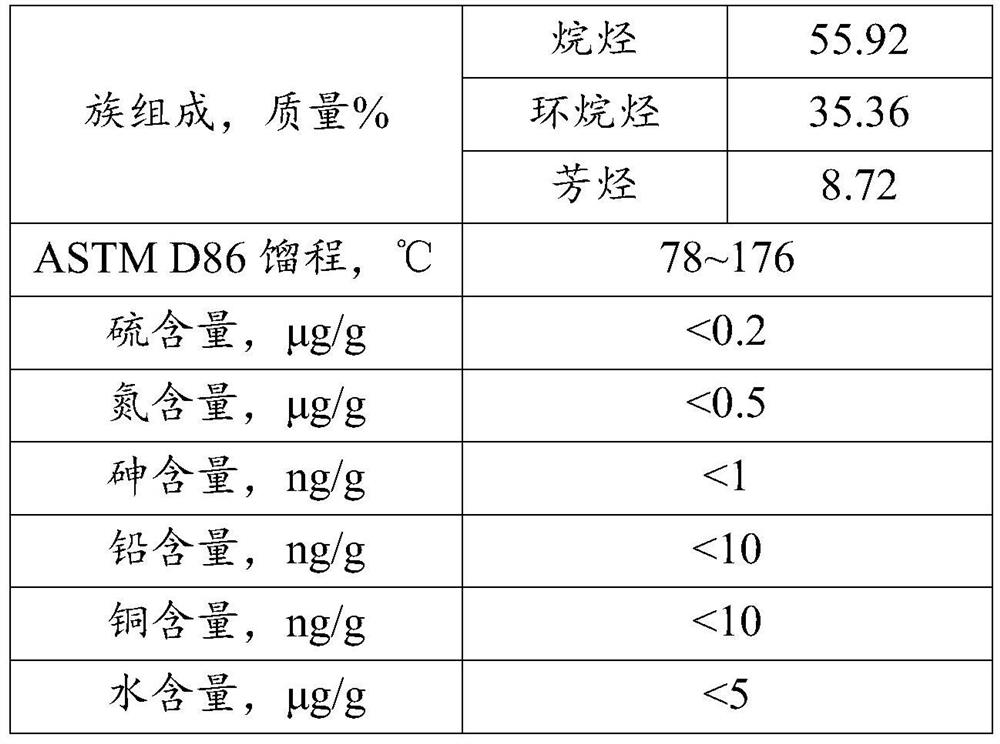A countercurrent continuous reforming reaction method
A reforming reaction and countercurrent technology, applied in the direction of naphtha catalytic reforming, etc., can solve the problems of reducing economic benefits, reducing catalyst activity and selectivity, etc., and achieve the effect of reducing total carbon deposition and good performance
- Summary
- Abstract
- Description
- Claims
- Application Information
AI Technical Summary
Problems solved by technology
Method used
Image
Examples
example 1
[0037] Carry out countercurrent continuous reforming reaction of naphtha according to the method of Comparative Example 1, the difference is that when the temperature of each reactor rises to 370 ° C, after feeding naphtha to start the reaction, inject dimethylformamide into the reforming reaction feed Based on disulfide and tetrachloroethylene, the sulfur content in the feed is controlled to be 4 μg / g. When the temperature of each reactor rises to 480°C and the concentration of hydrogen sulfide in the circulating gas reaches 2 μL / L, the sulfur in the feed will be reformed. The content was lowered to 0.9 μg / g.
[0038] Keep the sulfur content in the reforming feed at 0.9μg / g, raise the temperature of each reactor to 490°C, dehydrate at this temperature, when the water content in the reforming cycle gas is less than 50μL / L, the reforming feed The amount is gradually increased to the design feed rate of the reforming unit of 72 tons / hour, and the temperature of each reactor is c...
example 2
[0040] Carry out the reforming reaction of naphtha by the method of comparative example 1, difference is, after each reactor temperature rises to 370 ℃, after passing through naphtha to start reaction, inject dimethyl disulfide in reforming reaction feed Ether and tetrachlorethylene, control the sulfur content in the feed to 4μg / g, when the temperature of each reactor rises to 480°C, and when the concentration of hydrogen sulfide in the circulating gas reaches 2μL / L, the sulfur content in the reforming feed is lowered to 0.6 μg / g.
[0041] Keep the sulfur content in the reforming feed at 0.6μg / g, raise the temperature of each reactor to 490°C, dehydrate at this temperature, when the water content in the reforming cycle gas is less than 50μL / L, the reforming feed The amount is gradually increased to the design feed rate of the reforming unit of 72 tons / hour, and the temperature of each reactor is continued to increase. When the temperature of each reactor is 515 ° C, the carbon...
PUM
 Login to View More
Login to View More Abstract
Description
Claims
Application Information
 Login to View More
Login to View More - R&D
- Intellectual Property
- Life Sciences
- Materials
- Tech Scout
- Unparalleled Data Quality
- Higher Quality Content
- 60% Fewer Hallucinations
Browse by: Latest US Patents, China's latest patents, Technical Efficacy Thesaurus, Application Domain, Technology Topic, Popular Technical Reports.
© 2025 PatSnap. All rights reserved.Legal|Privacy policy|Modern Slavery Act Transparency Statement|Sitemap|About US| Contact US: help@patsnap.com

